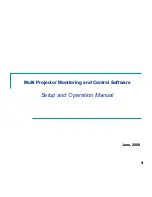
Table 4: Action Based on Well-Known Community Membership
(continued)
BGP Device Action
Well-Known Community
Does not advertise the route to any external peers
local-as (also known as
no-export-subconfed)
Advertises this route to the Internet community; by default, all
prefixes are members of the Internet community
internet
In addition to the well-known communities, you can define local-use communities,
also known as private communities or general communities. These communities
serve as a convenient way to categorize groups of routes to facilitate the use of routing
policies. The community attribute consists of four octets, but it is common practice
to designate communities in the
AA
:
NN
format. The autonomous system number
(
AA
) comprises the higher two octets, and the community number (
NN
) comprises
the lower two octets. Both are expressed as decimal numbers. For example, if a
prefix in AS 23 belongs to community 411, the attribute could be expressed as
23:411. Use the
ip bgp-community new-format
command to specify that the
show
commands display communities in this format. You can also use a regular expression
to specify the community attribute.
Use the
set community
command in route maps to configure the community
attributes. You can add one or more communities to the attribute, or you can use
the
list
keyword to add a list of communities to the attribute. By default, the
community attribute is not sent to BGP peers. To send the community attribute to
a neighbor, use the
neighbor send community
command.
A community list is a sequential collection of permit and deny conditions. Each
condition describes the community number to be matched. If you issued the
ip
bgp-community new-format
command, the community number is in
AA
:
NN
format;
otherwise, it is in decimal format (the hexadecimal octets converted to decimal).
The router tests the community attribute of a route against each condition in a
community list. The first match determines whether the router accepts (the route is
permitted) or rejects (the route is denied) a route that has the specified community.
Because the router stops testing conditions after the first match, the order of the
conditions is critical. If no conditions match, the router rejects the route.
Consider the network structure shown in Figure 5 on page 40.
Community Lists
■
39
Chapter 1: Configuring Routing Policy
Summary of Contents for JUNOSE 11.0.X IP SERVICES
Page 6: ...vi...
Page 8: ...viii JUNOSe 11 0 x IP Services Configuration Guide...
Page 18: ...xviii Table of Contents JUNOSe 11 0 x IP Services Configuration Guide...
Page 20: ...xx List of Figures JUNOSe 11 0 x IP Services Configuration Guide...
Page 22: ...xxii List of Tables JUNOSe 11 0 x IP Services Configuration Guide...
Page 28: ...2 Chapters JUNOSe 11 0 x IP Services Configuration Guide...
Page 138: ...112 Monitoring J Flow Statistics JUNOSe 11 0 x IP Services Configuration Guide...
Page 286: ...260 Monitoring IP Tunnels JUNOSe 11 0 x IP Services Configuration Guide...
Page 312: ...286 Monitoring IP Reassembly JUNOSe 11 0 x IP Services Configuration Guide...
Page 357: ...Part 2 Index Index on page 333 Index 331...
Page 358: ...332 Index JUNOSe 11 0 x IP Services Configuration Guide...
















































